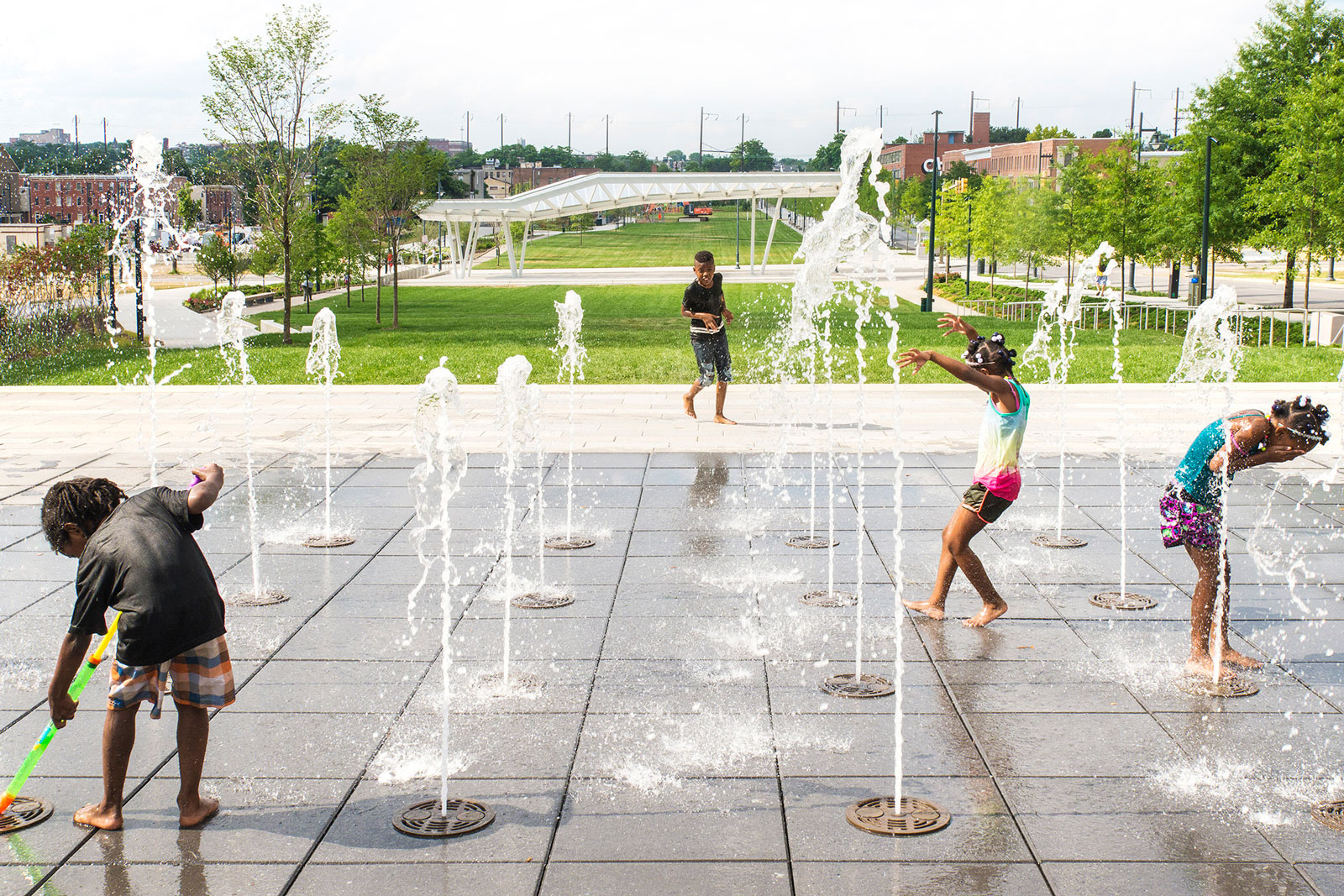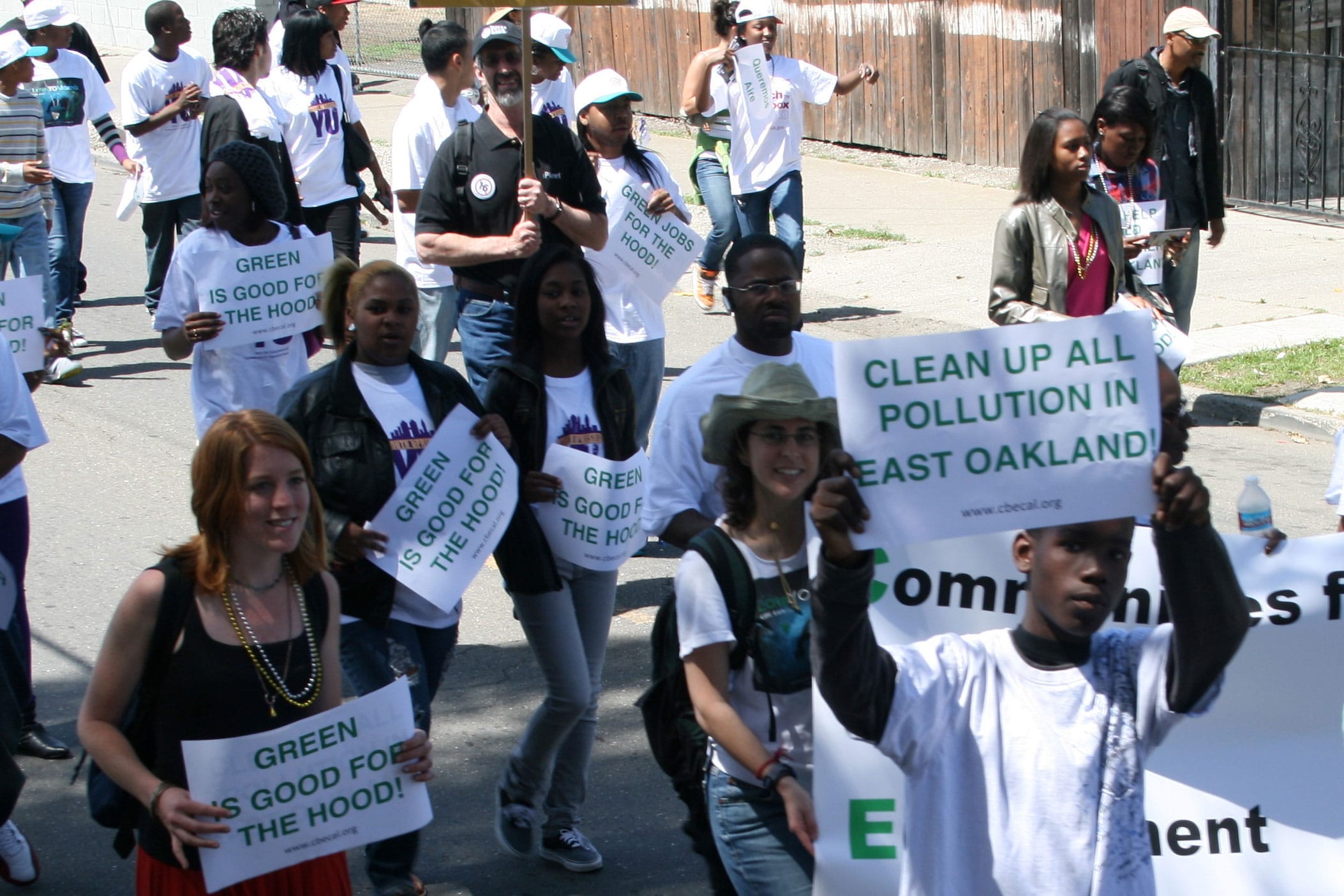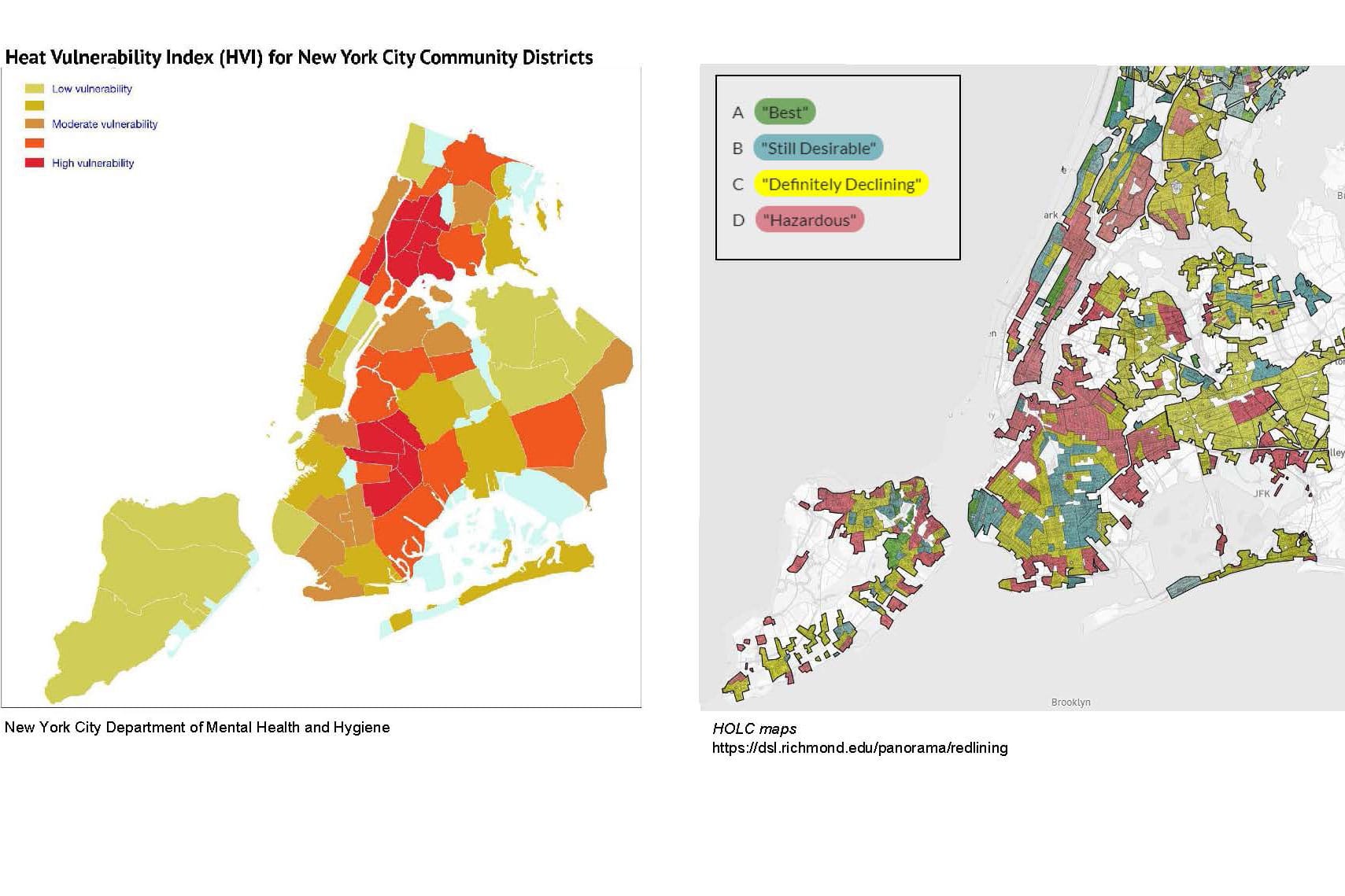
Gensler teamed with Mahan Rykiel Associates, Landscape Architects, to design a new park bridging a disinvested neighborhood and the Johns Hopkins Medical campus in East Baltimore. The community outreach process included multiple community-focused vision sessions, which informed programmatic elements in the park that include a pavilion providing shade and a water feature, offering publicly accessible spaces of respite during a heatwave. Photo by Harry Connolly
Recent events related to longstanding systemic racism and the current pandemic have caused architects and designers to consider issues of social justice and equity in the built environment with greater commitment and urgency. The first step in this effort is to recognize and understand how climate change disproportionately impacts communities of color, especially in our cities. Coordinated design and policy solutions are necessary to combat this worsening public health threat.
While the intersection of race and environmental impact has a long history, in the early 1980s national recognition emerged around what’s known as environmental racism—or the pattern of disproportionate exposure to environmental hazards experienced by people of color throughout urban, subrurban, and rural communities. At this time, awareness grew after civil rights leaders such as Dr. Benjamin Chavis joined community members in protesting the dumping of harmful toxic waste in the low-income black community of Afton, North Carolina.

Protestors block the delivery of toxic PCB waste to a landfill in Afton, North Carolina, 1982. Courtesy of Ricky Stilley
Over the 20 years that followed, awareness increased around the link between fossil fuels, unsustainable production processes, and climate changes as the concept of climate justice simultaneously took hold at both global and local scales. The idea was to draw attention to the disparities in exposure to environmental hazards like poor air and water qualities experienced by people of color and do something about it. The Bali Principles of Climate Justice in 2002 specifically called these disparities out. More recently, the NAACP founded the Climate Justice Initiative in 2010.
Now equity is a topic in all reports by the Intergovernmental Panel on Climate Change (IPCC), with the latest report, “Global Warming of 1.5C,” stating that “climate change and climate variability worsen existing poverty and exacerbate inequalities, especially for those disadvantaged by gender, age, race, class, caste, indigeneity, and (dis)ability issues of sustainable development (SD) and equity.” While it is significant progress that this topic is part of IPCC findings, community activism is still a driving force in the climate justice movement to create change at the neighborhood level.
As designers we have a collective responsibility to address the threats of climate change in the built environment, while simultaneously promoting equity by working to protect our most severely impacted communities.
How Architects and Designers Can Deliberately Shape the Built Environment to Further Climate Justice

Earth Day Rally in Oakland, California. Courtesy of Creative Commons
1. Improve air quality to lift the inequitable health burden of air pollution.
According to a 2017 report by the NAACP and the Clean Air Task Force Black Americans are exposed to 38% more polluted air than non-Latino white people and they are 75% more likely than the average American to live in fenceline communities, or places bordering a polluting facility like a factory or refinery.
In fact, more than 1 million Black people in the US live within a half-mile of an oil and gas facility and are subject to potential health impacts from toxic air pollution and cancer risks that exceed levels of concern established by the EPA. Many of these areas violate air quality standards for ozone smog.
As a result, asthma rates are relatively high in Black communities. According to the NAACP report, Black children suffer 138,000 asthma attacks and 101,000 lost school days each year as a result of ozone increases due to natural gas emissions during the summer. In 2014 Black people were almost three times more likely to die from asthma-related causes than the white population, according to the US Department of Health and Services Office of Minority Health.
A 2008 study shows that even higher incomes do not insulate Black Americans from harmful pollution levels. Black households with annual incomes between $50,000 and $60,000 live in neighborhoods that are more polluted than the average white neighborhood, with incomes below $10,000.
To improve air quality, we can start looking at the estimated air quality impacts of different energy conservation measures during the design process. While it is common to look at the percentage of energy reduction of these measures, we can expand metrics that estimate their reduction on air quality and prioritize strategies that have the greatest savings for both air pollution and carbon.
We can also avoid combustion in the design of our heating, cooling, and cooking systems by using electricity rather than natural gas. Architects and designers can advocate for state building codes to require all electric buildings, particularly in jurisdictions that have made large commitments to clean electricity.
In Berkeley, for example, the first building ordinance requiring all-electric consumption was established. Meanwhile in Brookline, a ban on new gas connections was implemented, and in New York state a commitment has been set to achieve 100% clean electricity by 2040.
2. Mitigate the impact of extreme heat by introducing resiliency strategies in heat-vulnerable neighborhoods.

Throughout the US formerly redlined areas are consistently hotter than non-redlined areas, with land surface temperatures as much as 7°C hotter than adjacent non-redlined areas. The distribution of vegetation, building typologies, surface materials, income, and health all factor in. Courtesy of Gensler
Global warming is no longer a looming threat impacting our future climate; it’s a present-day killer. Today extreme heat is one of the leading causes of weather-related deaths in the US. On average extreme heat is the most fatal of all extreme weather events in New York City.
Extreme heat also disproportionately impacts communities of color. A look at New York City’s Heat Vulnerability Index shows the neighborhoods that rank highest are low-income neighborhoods with residents who are predominantly people of color. Throughout the country formerly redlined areas are consistently hotter than non-redlined areas, with land surface temperatures as much as 7°C hotter than adjacent non-redlined areas. Factors driving this risk at the neighborhood level include the distribution of vegetation, building typologies, surface materials, income, and health.
The Urban Design Forum recently released a report, “Turning the Heat,” which offers 30 distinct design, policy, financial, and community resiliency strategies to protect New Yorkers from the threat of extreme heat and rising temperatures due to climate change. Design strategies that can help address the issue include increasing insulation values and reducing leakage in building envelopes, designing exterior solar control devices tailored to the solar orientation of each facade, maximizing vegetation on roofs and throughout sites, using materials with high solar reflectance, and incorporating shaded exterior spaces.
Designers can also partner with community-based organizations to design low-carbon pop-up shade structures in heat vulnerable neighborhoods. These structures could be developed through a participatory design process that involves local stakeholders, and they could feature the artwork of local artists, and be used to host public arts and collaborative programs.
We can also initiate conversations with our mechanical engineering consultants about heat rejection to explore opportunities for heat recovery and encourage systems with lower heat recovery.
Finally, we can discuss cooling set-points in the summer with our clients to ensure we are not unnecessarily over-cooling our spaces since more than 15% of heat in a heat wave is produced by air conditioning.
3. Clean energy and the clean economy must be accessible to all.
In June 2020 the American Council for an Energy-Efficient Economy published a fact sheet stating “historically, many marginalized groups have been underserved, overlooked, and underrepresented in local clean energy planning and policymaking.”
Policies that reduce high energy burdens and provide job opportunities for women and African-Americans in the energy efficiency and clean energy workforce can provide economic opportunity and foster equity.
California Senate Bill 535 is a good example. The law requires at least 25% of funds from the state’s cap-and-trade program in the Greenhouse Gas Reduction Fund be allocated to benefit disadvantaged communities, with at least 10% of the funds dedicated to projects within those communities.
New York City has also taken policy steps. There, more than $10 million in grants was made available this summer to help underserved New Yorkers access clean, affordable and reliable solar, representing the first step in implementing New York’s Social Energy Equity Framework.
Creating an inclusive, clean economy also involves creating access to jobs. Organizations like the South Bronx’s HOPE program are a good example. This group is focused on developing a local workforce trained in solar installation.
As designers we can partner with minority and women-owned businesses and can consciously identify opportunities to bolster local economies when selecting or advising on consultant team and materials selection.
A Call to Action
The issue of environmental racism is complex and dimensional; there’s no singular or easy solution, but as designers we can make a difference. We must understand and acknowledge that the carbon emissions from the built environment have consequences beyond contributing to climate change. And we must look for opportunities to directly and proactively address climate justice in our design work and make time to listen to community members about their most pressing challenges.


